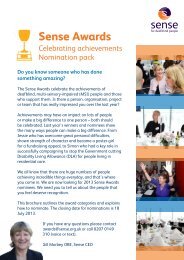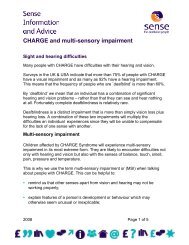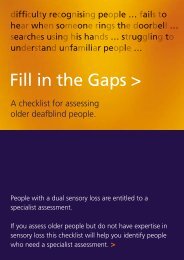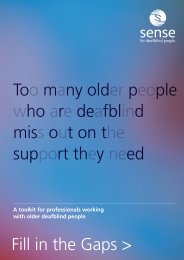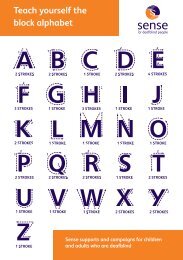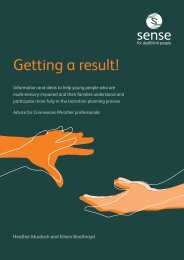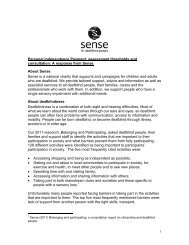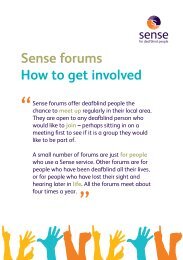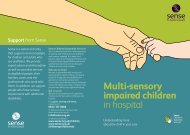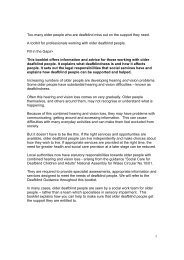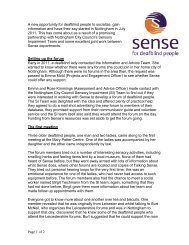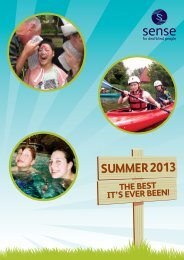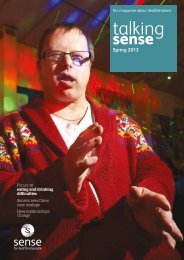MSI Unit Curriculum - Sense
MSI Unit Curriculum - Sense
MSI Unit Curriculum - Sense
You also want an ePaper? Increase the reach of your titles
YUMPU automatically turns print PDFs into web optimized ePapers that Google loves.
Victoria School: <strong>MSI</strong> <strong>Unit</strong> <strong>Curriculum</strong>GlossaryMany technical terms are used in the <strong>Curriculum</strong>. In some cases, terms may beunderstood differently by different professionals. The glossary below gives themeanings used in the <strong>MSI</strong> <strong>Unit</strong> <strong>Curriculum</strong>.acoustic/auditory environment the context in which a pupil uses hearing,including reverberation (echo) and background noise.active (haptic) touch movement (often of a hand or foot) resulting in contactwith a person, object or surface.agency acting deliberately; knowing what you are doing.attention focusing awareness on a particular stimulus.breakdown in communication failure to exchange a communicative message.The breakdown may be verbal or non-verbal – not understanding what hasbeen signed, for example, or not recognising what is being looked at.burst/pause pattern intrinsic rhythm of many developmentally early activities,in which activity (burst) is followed by less or no activity (pause); this pattern isrepeated again and again.calendar/timetable work using a calendar or timetable to plan, anticipate and/or review a period of time, from a minute to a year or more. Most usually, tooverview part or all of the current day. The calendar or timetable may useobjects, shapes, symbols, pictures, text or other modes.close senses senses providing information only about events close to a person’sbody, ie: active (haptic) touch, taste, temperature, pain and the movement andbalance senses. Smell provides some information about more distant events,as does passive touch.coactive movement staff member and pupil moving together in an activity, thetwo acting as one person.communication mode how communication occurs – for example, speech,signing, symbols, photos, non-verbal behaviours.comprehension in terms of sensory function: understanding the implications ofsensory information (eg: anticipating an outing from watching packed lunchesbeing put into a coolbag).contextual cue naturally-occurring sight, sound or other signifier used as cue(eg: sound of tap running when drink is made).143



